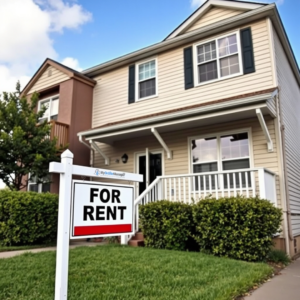For generations, owning a home has been a cornerstone of the American Dream—a symbol of stability, success, and security. But for many families today, that dream is increasingly out of reach. A combination of soaring home prices, high mortgage rates, and a persistent housing shortage has created a real estate environment that’s difficult to navigate, especially for first-time buyers and middle-income earners. As market conditions grow more challenging, many are forced to reevaluate what the American Dream means in 2025.
Home Prices at Record Highs
Over the last several years, the U.S. housing market has experienced an unprecedented surge in prices. According to the article from MSN, the median sale price of a home in America recently hit approximately $392,000—a dramatic jump from just $199,200 in 2017. This near-doubling in price reflects intense demand, limited supply, and inflationary pressures that have affected everything from building materials to labor costs.
The affordability gap has widened sharply, leaving many families, especially in high-cost states, unable to save enough for a down payment. Buyers are often competing with cash offers from investors or wealthier individuals, pushing average Americans out of the running.
Mortgage Rates Adding to the Strain
Adding fuel to the fire, mortgage rates have risen sharply due to inflation and the Federal Reserve’s efforts to stabilize the economy. Where buyers once locked in 30-year fixed mortgages below 4%, they’re now seeing rates closer to 7%—if not higher. This rise has significantly increased the monthly cost of homeownership.
To illustrate: a $400,000 mortgage at a 3% interest rate would have cost around $1,686/month in principal and interest. At 7%, that same loan now costs about $2,661/month—a nearly $1,000 increase each month. For many families, that price hike is simply unsustainable.
A Growing Housing Shortage
Beyond costs, there’s simply not enough housing to meet the demand. The U.S. is short an estimated 3.8 million homes, a gap created by years of underbuilding, zoning restrictions, and pandemic-era supply chain issues. As a result, competition for available homes is fierce, especially in growing urban and suburban areas. This lack of inventory disproportionately affects lower-income households and young buyers hoping to enter the market.
The Toll on Families
The emotional and financial toll of today’s market is significant. Many families are discouraged after months of house hunting, only to be outbid repeatedly. For others, the cost of homeownership—even when successful—is straining their budgets. Maintenance, insurance, property taxes, and now climate-related risks like wildfire or flood insurance premiums are pushing monthly expenses higher than expected.
In states like California, where the number of “million-dollar cities” has quadrupled since 2014, the dream of homeownership has all but vanished for middle-class residents. Families are forced to rent longer, relocate to lower-cost areas, or live with relatives while saving—a far cry from the traditional image of the American Dream.
Shifting the Dream: New Strategies for Modern Buyers
Despite the obstacles, many prospective buyers are finding ways to adapt. Here are several strategies to consider in today’s challenging market:
-
Get Financially Fit: Aim for a strong credit score (typically 620 or higher), a stable income, and a manageable debt-to-income (DTI) ratio below 35%. These factors can significantly increase your chances of loan approval and help secure better interest rates.
-
Consider Alternative Markets: While major metro areas may be out of reach, smaller towns and emerging suburbs often offer more affordable options and higher potential for long-term growth.
-
Explore Government Programs: First-time homebuyer programs, FHA loans, and local assistance initiatives can reduce the upfront cost of buying a home.
-
Be Flexible on Housing Types: Instead of a single-family home, consider condos, townhomes, or fixer-uppers that may be priced lower and require a smaller down payment.
-
Work With Experts: A knowledgeable real estate agent or mortgage broker can guide you through complex negotiations, help you identify hidden opportunities, and make the process less stressful.
Conclusion
The American Dream isn’t dead—it’s evolving. While traditional paths to homeownership have become more difficult, today’s buyers are finding new ways to pursue stability and independence. With preparation, creativity, and resilience, families can still achieve their version of the dream—even if it looks a little different than it did for previous generations.
Source:
With Home Prices and Mortgage Rates High, Many Families Find the American Dream Out of Reach – MSN

